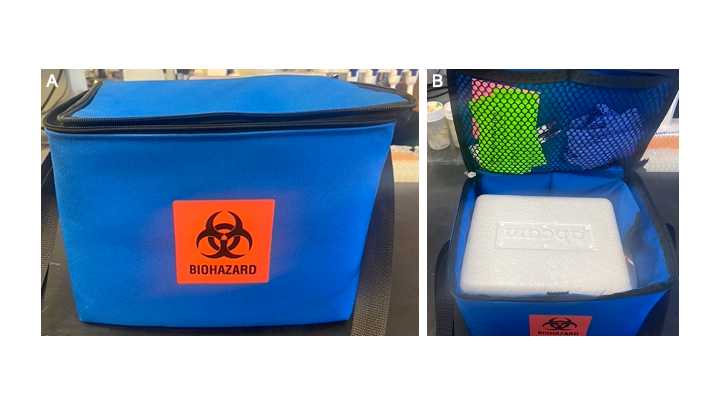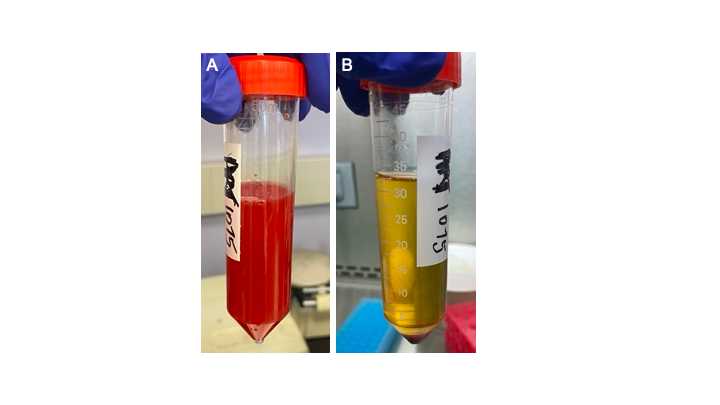Human Follicular Fluid Procurement and Processing
hannah.anvari, asma.giornazi, shriya.shah, maryellen.pavone, francesca.e.duncan duncan
Abstract
Purpose: This protocol is intended for use in the collection and storage of human follicular fluid in a research setting. The protocol details the collection, processing, and long-term storage of follicular fluid for downstream analysis.
Steps
Collection and processing fluids for storage
Follicular fluid is collected from an individual undergoing an egg retrieval procedure in
50 mL conical tubes at the Fertility and Reproductive Medicine clinic within Northwestern Medicine and stored at 2-4 °C immediately following collection. Research coordinator will collect and bring all tubes of follicular fluid to the lab kept on ice within 1 hour of an egg retrieval procedure. Samples should be transported in blue, labeled biohazard cooler bag (Fig. 1A, B).

Images are taken of follicular fluid before (Fig. 2A) and after (Fig. 2B) centrifugation and color of samples are noted. Samples will range from straw-colored, which is most ideal, to having a red tint which may indicate blood contamination from the process of egg retrieval and samples can still be stored in this case. Samples are of the pooled follicular fluid in all antral follicles from one patient ovary.

Follicular fluid is centrifuged at 300g for 20min at 4 °C and then the top, clear layer (supernatant) is immediately aliquoted into 2 mL and 5 mL cryovials which are subsequently frozen and stored at -80°C.

